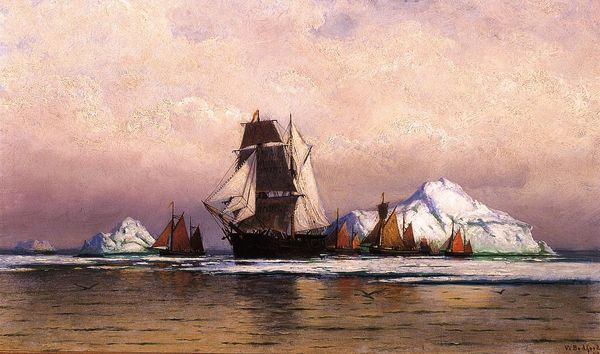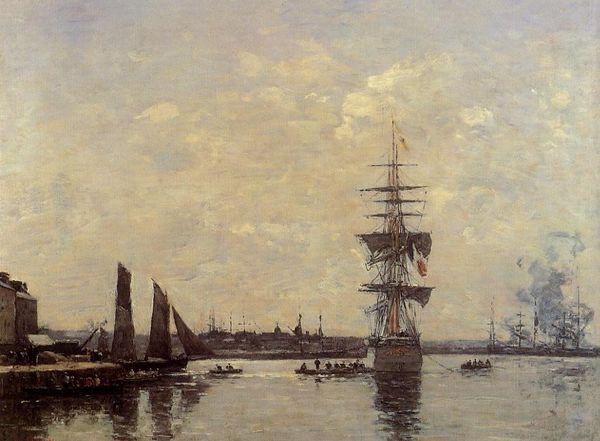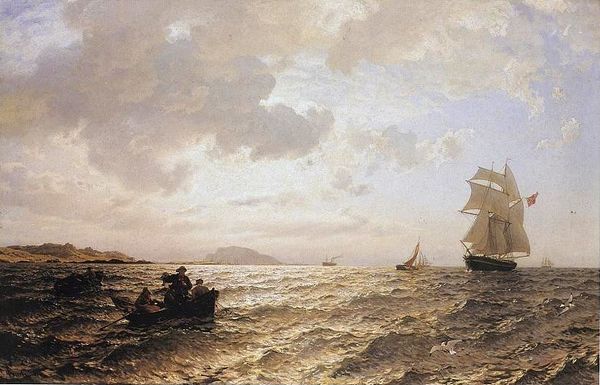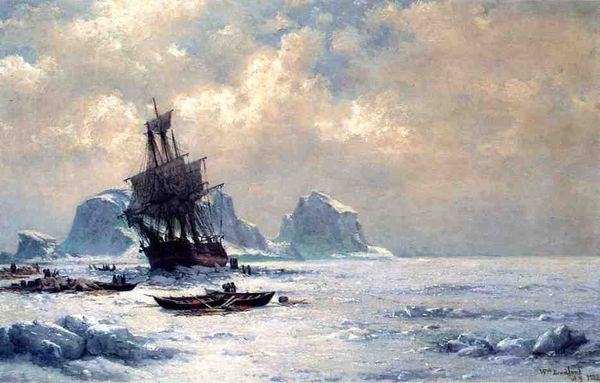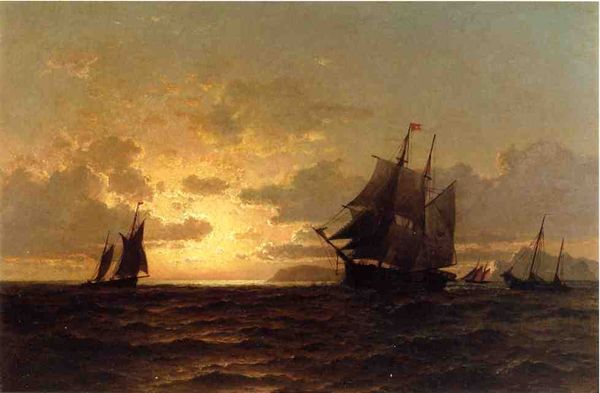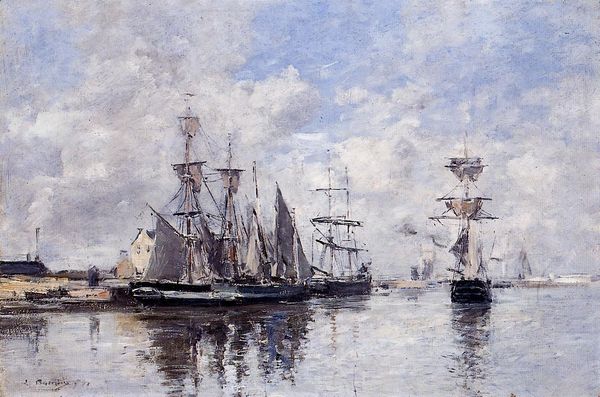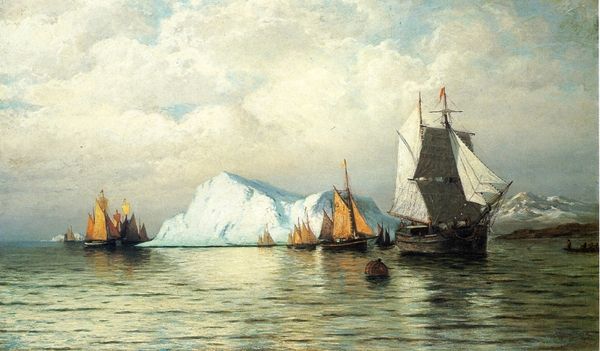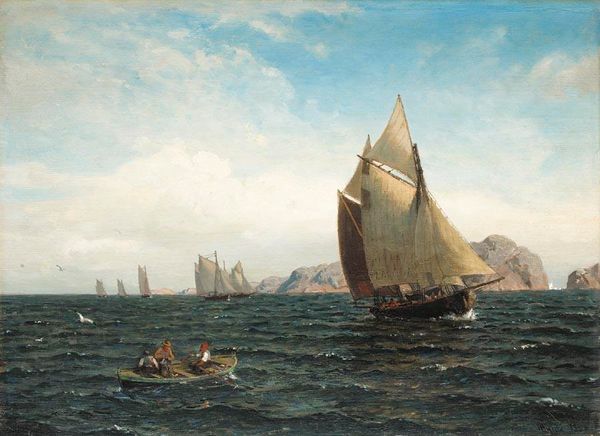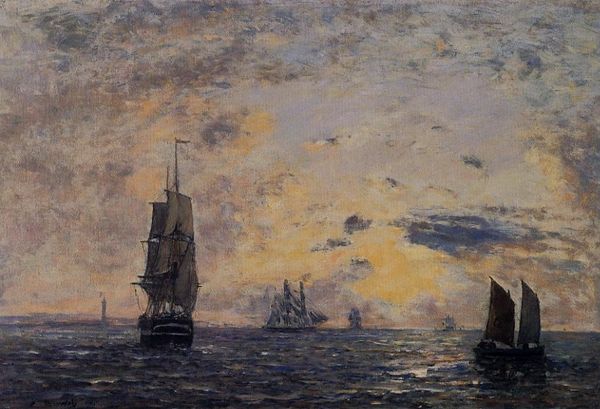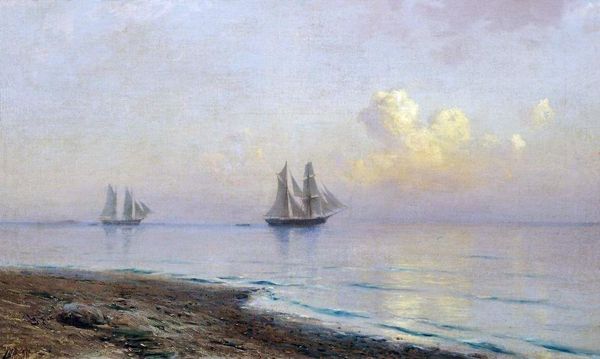
Copyright: Public domain
Editor: Here we have William Bradford’s “Looking out of Battle Harbor,” created in 1877. The painting captures a fleet of ships resting in calm waters. What strikes me most is the vast, looming sky that dominates the composition, giving the scene a rather solemn air. What do you make of it? Curator: Well, the 'solemn air' you perceive really speaks to Bradford's particular historical moment. We need to understand this as part of a broader cultural fascination with the Arctic, fueled by exploration narratives but also by increasing anxieties about industrialization and the taming of wilderness. How might the act of depicting these remote regions change them, bringing them into a 'civilized' world? Editor: So, it's not just about the visual representation, but also about what it signifies culturally? The encounter with "untouched" spaces? Curator: Precisely! Think about the institutions promoting these kinds of images. Museums, galleries, illustrated publications…They shape the public's understanding, influencing political decisions and reinforcing certain perceptions of the Arctic, and ultimately turning the romantic vision into political agendas. Bradford wasn't merely capturing a scene; he was participating in constructing a specific vision of a place, laden with the baggage of exploration and power. Do you notice how his composition creates a sense of the sublime but simultaneously domesticates it, reducing nature to almost decorative stage? Editor: I see what you mean! The ships appear static, posed even, as if nature were just a backdrop. It seems less about truly wild nature, and more about a picturesque moment captured and contained. Thanks for the insight! I never considered the image that way before. Curator: Of course. It’s a reminder that landscapes are never neutral. They are always shaped by cultural and historical forces. Looking closely at the conditions of production and circulation adds such a critical layer to understanding this seemingly placid painting.
Comments
No comments
Be the first to comment and join the conversation on the ultimate creative platform.

